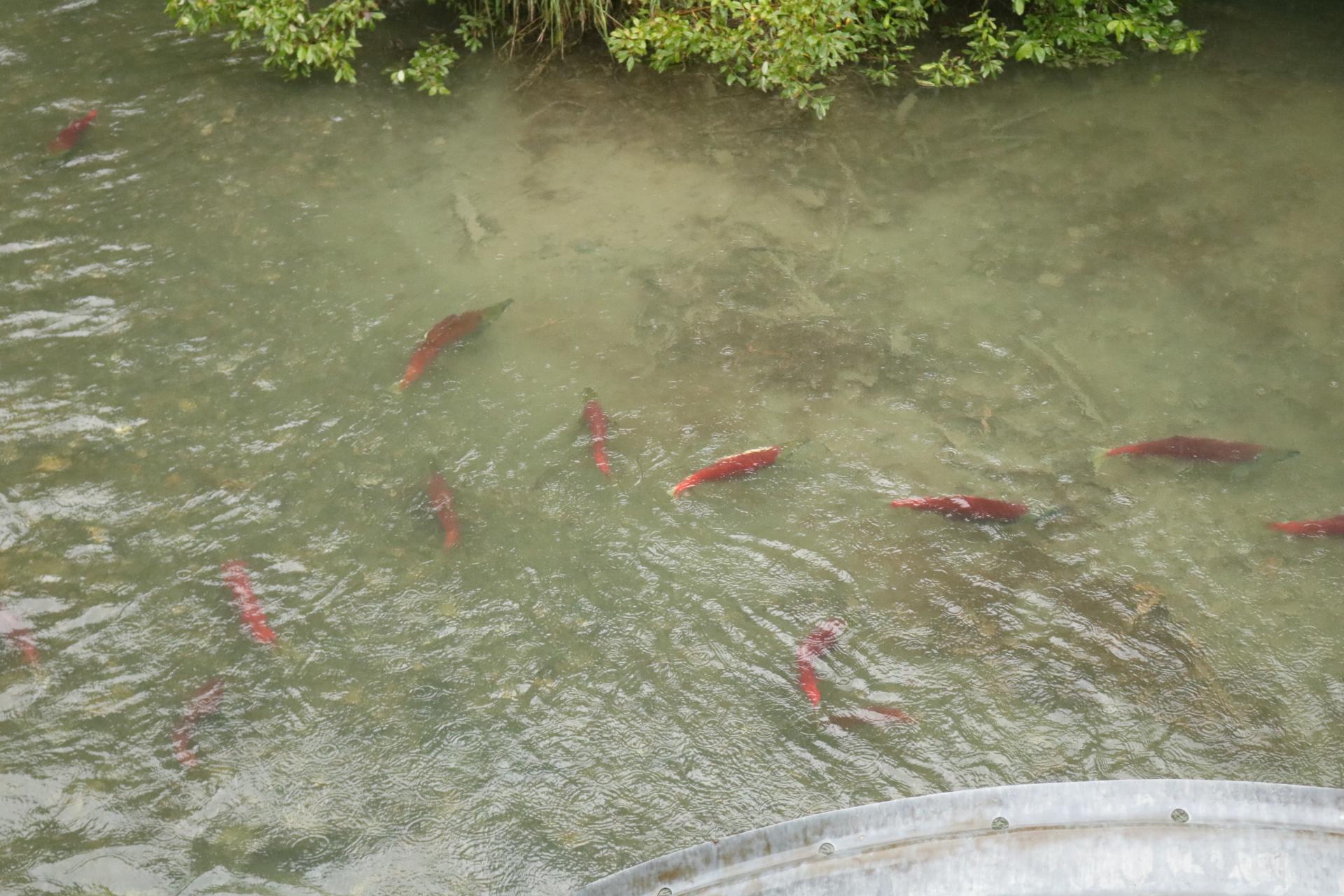
The Alaska Board of Fisheries kicked off its annual work session in Anchorage on Monday and salmon hatcheries will once again be a prominent topic of discussion. The board will consider whether to add issues surrounding production levels to future agendas and it will kick off a broader discussion on the hatchery industry on Tuesday.
Disagreements over salmon hatcheries have been roiling over the past few years, and those arguments have played out at Board of Fish meetings.
Hatchery opponents want the Alaska Department of Fish and Game to conduct more studies on the effects of hatchery fish spawning with wild populations and to start examining potential ocean carrying capacity issues. The department is currently in the midst of a large hatchery-wild spawning study.
Hatchery operators point to that as an example of due diligence by the department. Operators like Cook Inlet Aquaculture Executive Director Gary Fandrei say they’re ready for the board’s broad discussion on the state of hatcheries Tuesday afternoon, which may touch on some of those issues.
“We’re prepared for it. The hatchery programs are based on good sound science and we follow those principals,” Fandrei said. “They’re well regulated by the Department of Fish and Game, and we believe we are above board with everything we’re doing.”
An emergency petition back in March sparked the board’s discussion. The petition asked the board to look into Prince William Sound pinks that have been straying into lower Cook Inlet streams.
Valdez Fisheries Development Association Executive Director Mike Wells thinks the discussion will help the public better understand how hatcheries operate.
“I think the hatchery community will be there and ready to provide comment, certainly any misunderstandings or miscommunications of areas with regard to our program,” Wells said of Tuesday’s work session.
The public will be able to make comments to the board, though it will not be considered public testimony. Board members will follow up the discussion with more region-focused work sessions on hatcheries in the coming years.
Others are hoping those conversations will lead to change. Ricky Gease is the Executive Director of the Kenai River Sportfishing Association, which has questioned the value of hatcheries.
Gease acknowledges the department is studying hatchery-wild interactions in freshwater, but he said a recent Fish and Game report reviewing the state’s hatchery policies shows the department’s reluctance to study interactions in the open ocean. He hopes the board take up that issue in its discussions.
“We have more salmon in the ocean than ever before, yet over the last decade, across Alaska, the average size of salmon have been decreasing,” Gease said. “What is driving that?”
Gease also said recent king and sockeye run failures are evidence that large numbers of hatchery fish, namely pink salmon, are increasing competition in the Gulf of Alaska. Fish and Game’s report said those issues could be the result of many environmental factors.
While it’s unclear what direction the board’s broader discussion may go, members will also consider two agenda change requests surrounding hatchery production, specifically the harvesting of eggs.
Gease’s organization submitted one of those requests, which mirrors an emergency petition it submitted earlier this year. The petition asks the board to prevent the Valdez Fisheries Development Association from increasing its egg take by 20 million at its Solomon Gulch Hatchery.
“The board decided that it wasn’t an emergency situation, but that doesn’t mean that the situation isn’t important,” Gease said. “This is the next available opportunity outside of an emergency requests to get the issue on the agenda of the Board of Fisheries,” Gease said.
Gease hopes the board is willing to consider the issue at a later date, though those eggs have already been collected and hatched. Another proposal is also asking the board to set a statewide cap on hatchery production.
Both of those requests will be considered on Monday afternoon.




